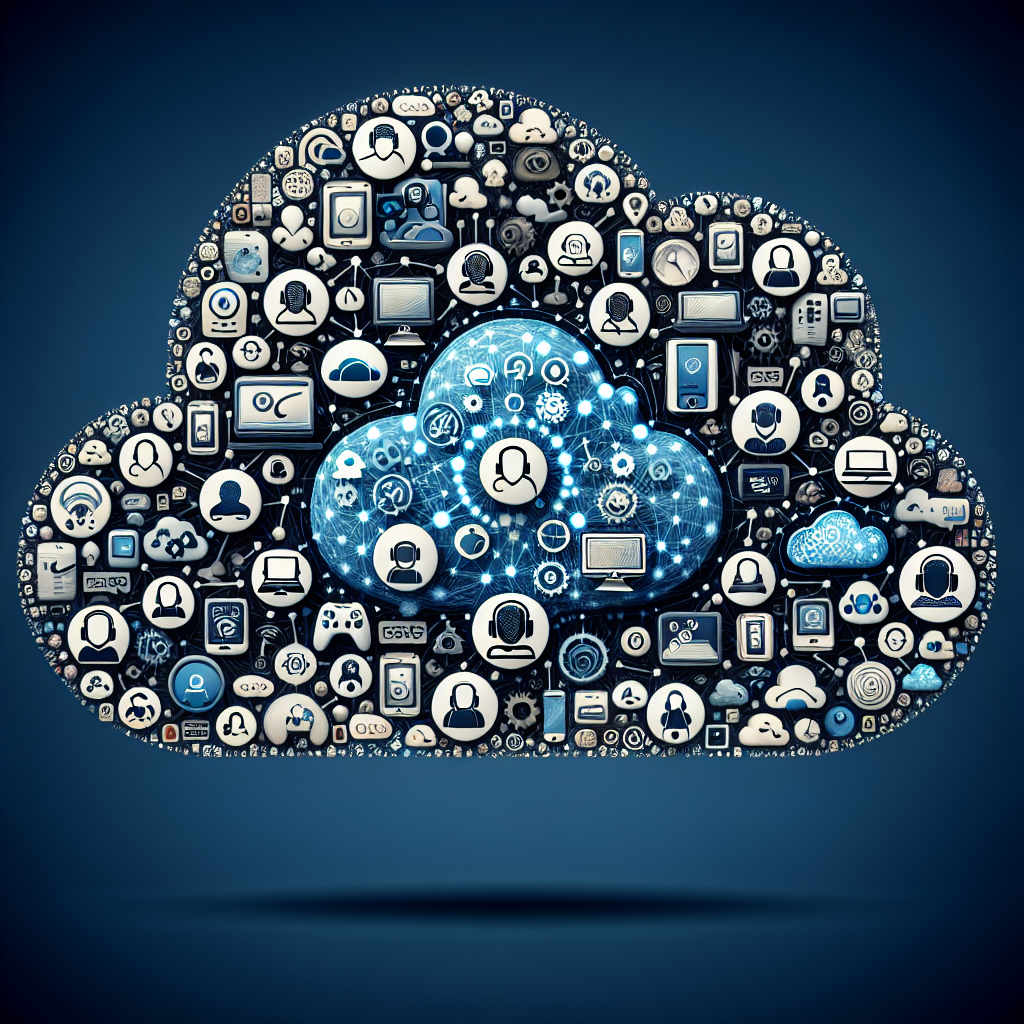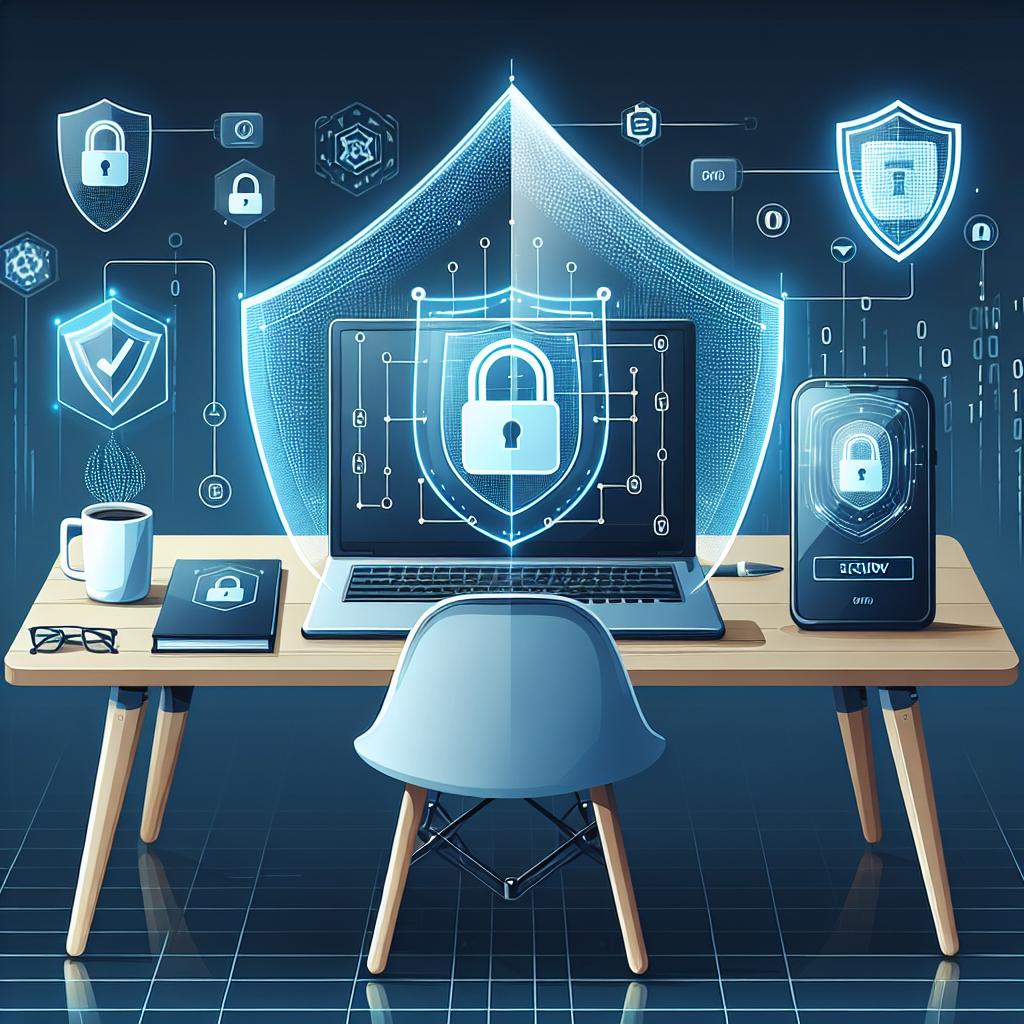Your cart is currently empty!
Tag: Work

The Future of Work: How IT Solutions are Shaping the Modern Workplace
The Future of Work: How IT Solutions are Shaping the Modern WorkplaceThe way we work is constantly evolving, and with the rapid advancement of technology, the modern workplace is undergoing a transformation like never before. As companies strive to stay ahead of the curve and remain competitive in today’s fast-paced business world, the role of IT solutions in shaping the future of work has become increasingly important.
One of the key drivers of this change is the rise of remote work. With the advent of cloud computing and collaboration tools, employees are no longer tethered to a physical office space. This flexibility has not only empowered workers to better balance their personal and professional lives, but it has also opened up new opportunities for companies to tap into a global talent pool. IT solutions such as virtual private networks (VPNs) and video conferencing platforms have made it easier than ever for teams to collaborate and communicate effectively, regardless of their location.
Another major trend in the modern workplace is the increasing use of automation and artificial intelligence (AI) to streamline processes and increase efficiency. From chatbots that handle customer inquiries to algorithms that analyze data and make recommendations, IT solutions are enabling companies to automate repetitive tasks and free up their employees to focus on more strategic and creative work. This not only improves productivity but also allows organizations to make better, data-driven decisions in real-time.
Furthermore, IT solutions are also revolutionizing the way we access and manage information. With the proliferation of cloud storage and document management systems, employees can now easily collaborate on projects, share files, and access important data from anywhere, at any time. This not only improves communication and collaboration within teams but also ensures that everyone is working from the same up-to-date information.
As the modern workplace continues to evolve, it is clear that IT solutions will play an increasingly crucial role in shaping the future of work. Companies that embrace these technologies and adapt to the changing landscape will be better positioned to attract top talent, increase efficiency, and drive innovation in the years to come. By leveraging the power of IT solutions, organizations can create a more connected, agile, and productive workplace that is equipped to meet the challenges of tomorrow.

The Future of Business: How Cloud Computing is Revolutionizing the Way We Work
Cloud computing has become an integral part of the business world, revolutionizing the way we work and conduct business operations. With the rise of technology and digitalization, cloud computing has paved the way for a more efficient and cost-effective way of storing, managing, and accessing data.One of the key benefits of cloud computing is its ability to provide businesses with access to a wide range of computing resources, such as storage, processing power, and applications, through the internet. This means that businesses no longer have to invest in expensive hardware and software infrastructure, as they can simply access these resources on a pay-as-you-go basis through the cloud.
Another advantage of cloud computing is its scalability and flexibility. Businesses can easily scale up or down their computing resources based on their needs, without having to make significant investments in hardware or software upgrades. This flexibility allows businesses to adapt to changing market conditions and demands quickly and efficiently.
Cloud computing also offers increased security and data protection for businesses. Cloud service providers employ advanced security measures and encryption techniques to ensure that data stored in the cloud is safe from unauthorized access or cyber threats. This is especially important in today’s digital age, where data breaches and cyber attacks pose a significant risk to businesses.
Furthermore, cloud computing enables businesses to collaborate and communicate more effectively with employees, partners, and customers. By storing data and applications in the cloud, employees can access information from anywhere, at any time, and on any device. This promotes remote working and enhances productivity, as employees can work on projects collaboratively in real-time, regardless of their physical location.
Overall, the future of business is increasingly reliant on cloud computing as a key enabler of digital transformation. Businesses that embrace cloud computing stand to benefit from increased efficiency, cost savings, scalability, security, and flexibility. As technology continues to evolve, cloud computing will play an even more significant role in shaping the way we work and conduct business operations. It is essential for businesses to adapt and harness the power of cloud computing to stay competitive and thrive in the digital age.

The Role of Cloud Computing in the Era of Remote Work
Cloud computing has played a crucial role in enabling remote work during the COVID-19 pandemic. With the sudden shift to working from home, many organizations had to rely on cloud services to ensure their employees could access files, applications, and data from any location.Cloud computing allows users to store and access data and applications over the internet, rather than on a physical computer or server. This flexibility has been essential for remote work, as it allows employees to collaborate and work together seamlessly, regardless of their physical location.
One of the key benefits of cloud computing in the era of remote work is its scalability. Organizations can easily scale their cloud resources up or down to meet changing demands, without the need for expensive hardware or infrastructure upgrades. This flexibility has been invaluable for businesses that have had to quickly adapt to remote work environments.
Additionally, cloud computing offers enhanced security features, such as encryption and multi-factor authentication, to protect sensitive data and prevent unauthorized access. This has been particularly important as more employees work from home and access company networks from different devices and locations.
Cloud computing also enables real-time collaboration and communication through tools like video conferencing, instant messaging, and shared documents. These tools have been essential for remote teams to stay connected and productive, even when working from separate locations.
Overall, the role of cloud computing in the era of remote work cannot be overstated. Its flexibility, scalability, security, and collaboration tools have been instrumental in enabling organizations to continue operating smoothly during these challenging times. As remote work becomes more common in the future, cloud computing will continue to play a vital role in supporting flexible and efficient work environments.

Remote Monitoring Technology: Revolutionizing the Way We Work
Remote monitoring technology has been revolutionizing the way we work in recent years, allowing companies to keep a close eye on their operations from anywhere in the world. This technology enables businesses to monitor and manage equipment, processes, and systems remotely, providing real-time data and insights that can improve efficiency, productivity, and safety.One of the key benefits of remote monitoring technology is its ability to provide instant access to critical information. By using sensors, cameras, and other monitoring devices, companies can track the performance of machinery, monitor environmental conditions, and detect potential issues before they become serious problems. This real-time data allows businesses to make informed decisions quickly, minimizing downtime and maximizing productivity.
Remote monitoring technology also allows companies to reduce the need for on-site inspections and maintenance, saving time and money. By remotely monitoring equipment and processes, companies can identify maintenance needs and schedule repairs proactively, preventing costly breakdowns and extending the life of their assets. This proactive approach to maintenance can also improve operational efficiency and reduce the risk of accidents and injuries.
In addition to improving efficiency and productivity, remote monitoring technology can also enhance safety in the workplace. By monitoring equipment and processes remotely, companies can identify potential hazards and take corrective action before they pose a risk to employees. This proactive approach to safety can help prevent accidents and injuries, creating a safer work environment for all employees.
Overall, remote monitoring technology is revolutionizing the way we work by providing real-time data and insights that can improve efficiency, productivity, and safety. By leveraging this technology, companies can monitor and manage their operations from anywhere in the world, making informed decisions quickly and proactively addressing issues before they become serious problems. As remote monitoring technology continues to evolve, it will likely play an increasingly important role in the way businesses operate, helping them stay competitive in an ever-changing marketplace.

How Remote Monitoring is Transforming the Way We Work
Remote monitoring technology has revolutionized the way we work, allowing employees to stay connected and productive even when they are not in the office. This technology has become especially important in recent years as more and more companies are adopting remote work policies in response to the COVID-19 pandemic.One of the key benefits of remote monitoring technology is its ability to track employee performance and productivity. With remote monitoring tools, managers can easily see what tasks employees are working on, how much time they are spending on each task, and how productive they are being. This allows managers to identify any inefficiencies or bottlenecks in the workflow and make adjustments as needed.
Remote monitoring technology also allows for better communication and collaboration among team members. With tools like video conferencing, instant messaging, and project management software, employees can easily stay connected and work together on projects no matter where they are located. This has helped to break down barriers to communication and collaboration that can often arise when employees are working remotely.
Another key benefit of remote monitoring technology is its ability to improve security and compliance. By monitoring employee activity on company devices, managers can ensure that sensitive information is being handled properly and that employees are following company policies and procedures. This is especially important in industries that deal with sensitive data, such as healthcare or finance.
Overall, remote monitoring technology has transformed the way we work by allowing employees to stay connected, productive, and secure no matter where they are located. As more companies continue to embrace remote work policies, the importance of remote monitoring technology will only continue to grow. It has become an essential tool for modern businesses looking to adapt to the changing work landscape and ensure their employees are able to work efficiently and effectively, no matter where they are.
Chief Drake Announces the Creation of a New Additional Officer Work Shift Effective Tomorrow
In keeping with the police department’s commitment to be innovative in its mission to enhance Nashville’s safety, Chief John Drake today announced the implementation of an additional overlapping officer work shift effective February 1 to enhance police visibility during peak hours and reduce response time for non-emergency calls.
“The new D-shift, to be staffed by a total of 41 officers, 5 sergeants and 1 lieutenant, will operate 7 days a week between the hours of noon and 10:30 p.m.,” Chief Drake said. “D-shift officers will have the flexibility to provide additional resources to any of our 8 precincts across the county, particularly those that have a higher volume of pending calls.”
Officers comprising the D-shift had been part of precinct-based community engagement teams, which continue to be fully operational, just with fewer personnel. Chief Drake noted that community engagement will always be one of the MNPD’s core pillars.
The new D-shift will provide for 4 overlapping shifts on a daily basis:
- Day Detail (A-shift): 6 a.m. to 4:30 p.m.
- Evening Detail (B-shift): 3 p.m. to 1:30 a.m.
- Overnight Detail (C-shift): 9 p.m. to 7:30 a.m.
- Afternoon/Evening Detail (D-shift): noon-10:30 p.m.
The D-shift will be led by Lieutenant Brad Nave. Considering regular days off, vacations, sick leave, in-service training, etc., the D-shift will operate with a minimum staffing of 18 officers plus supervisors. Besides supporting precincts with a high call volume, D shift officers will also assist in securing large crime scenes, respond to demonstrations/protests, and support other precision policing efforts.
Attention all department members,I am pleased to announce that starting tomorrow, we will be implementing a new additional officer work shift to better serve our community. This decision comes in response to the increasing demands and calls for service that our department has been receiving.
The new shift will provide us with more coverage during peak hours and help us maintain a proactive approach to crime prevention. Our goal is to enhance our response times and overall effectiveness in keeping our community safe.
I want to thank all of our officers for their dedication and hard work, and I am confident that this new shift will further strengthen our ability to serve and protect. Please make sure to review the updated schedule and be prepared for the changes that will take effect tomorrow.
Thank you for your continued commitment to excellence in law enforcement.
Chief Drake
Tags:
Chief Drake, officer work shift, new shift announcement, additional officer, police department, law enforcement, scheduling change, effective immediately, work schedule update, officer staffing, law enforcement news.
#Chief #Drake #Announces #Creation #Additional #Officer #Work #Shift #Effective #Tomorrow
Remote Monitoring for Remote Work: Keeping Employees Connected and Productive
Remote work has become increasingly popular in recent years, with many companies offering employees the flexibility to work from home. While this setup offers numerous benefits, such as improved work-life balance and reduced commute times, it also presents some challenges, particularly in terms of keeping employees connected and productive.One solution to this issue is remote monitoring, which allows employers to keep track of their employees’ activities and productivity levels while they work from home. Remote monitoring tools can provide valuable insights into how employees are spending their time, whether they are meeting deadlines, and if they are staying on task.
One of the key benefits of remote monitoring is that it helps to maintain a sense of accountability among employees. When employees know that their work is being monitored, they are more likely to stay focused and productive. This can be especially important for remote workers who may lack the structure and supervision of a traditional office environment.
Remote monitoring can also help employers identify any potential issues or bottlenecks in the workflow. By tracking employees’ activities and progress on tasks, managers can quickly address any issues that may be hindering productivity and make adjustments as needed.
Additionally, remote monitoring can be a valuable tool for ensuring that employees are complying with company policies and procedures. For example, if employees are required to log their hours or adhere to specific work schedules, remote monitoring can help ensure that these guidelines are being followed.
Of course, it is important to strike a balance when it comes to remote monitoring. While it can be a valuable tool for keeping employees connected and productive, it is also important to respect employees’ privacy and autonomy. Employers should be transparent about the use of remote monitoring tools and ensure that they are being used in a fair and ethical manner.
In conclusion, remote monitoring can be a valuable tool for keeping employees connected and productive while working from home. By providing insights into employees’ activities and productivity levels, remote monitoring can help maintain accountability, identify potential issues, and ensure compliance with company policies. Ultimately, remote monitoring can help employees and employers alike navigate the challenges of remote work and achieve success in a virtual work environment.

Cloud Computing for Remote Work: Enabling Collaboration and Productivity
In recent years, cloud computing has become an essential tool for businesses looking to enable remote work and enhance collaboration and productivity among employees. With the rise of remote work due to the COVID-19 pandemic, cloud computing has played a crucial role in ensuring that teams can work together seamlessly regardless of their physical location.Cloud computing allows employees to access data, applications, and systems from any device with an internet connection, making it easier for remote workers to stay connected and productive. By storing information in the cloud, employees can easily share files, collaborate on projects, and communicate in real-time, leading to increased efficiency and productivity.
One of the key benefits of cloud computing for remote work is the ability to collaborate in real-time. With cloud-based tools such as Google Workspace, Microsoft 365, and Slack, teams can work together on documents, spreadsheets, and presentations simultaneously, eliminating the need for back-and-forth emails and ensuring that everyone is always working with the most up-to-date information.
Additionally, cloud computing enables remote workers to access business-critical applications and systems from anywhere, ensuring that they can continue to perform their jobs effectively even when they are not in the office. This flexibility allows employees to work at the times and locations that are most convenient for them, leading to increased job satisfaction and work-life balance.
Furthermore, cloud computing enhances security for remote work by providing centralized monitoring and access controls. By storing data in secure data centers and encrypting communications, businesses can protect sensitive information and ensure that remote workers are accessing information securely.
Overall, cloud computing has revolutionized remote work by enabling collaboration and productivity in ways that were previously not possible. With the right tools and technologies in place, businesses can empower their remote teams to work together effectively and achieve their goals regardless of where they are located. As remote work becomes increasingly common, cloud computing will continue to play a vital role in shaping the future of work.

How Remote Monitoring Technology is Revolutionizing the Way We Work
Remote monitoring technology has completely revolutionized the way we work in recent years. This technology allows employees to work from anywhere in the world, as long as they have an internet connection. It has enabled companies to have a more flexible workforce, leading to increased productivity, efficiency, and employee satisfaction.One of the key benefits of remote monitoring technology is the ability to track and monitor employee performance in real-time. This allows managers to have a clear understanding of how their team is working and identify any potential issues that need to be addressed. By having access to this data, managers can make informed decisions about how to improve productivity and performance.
Additionally, remote monitoring technology has made it easier for employees to collaborate and communicate with their colleagues, even if they are located on opposite sides of the globe. Through video conferencing, instant messaging, and project management tools, teams can work together seamlessly and efficiently. This has led to increased collaboration and creativity within organizations.
Furthermore, remote monitoring technology has allowed employees to have a better work-life balance. With the ability to work from home or a co-working space, employees can avoid long commutes and have more flexibility in their schedules. This has resulted in increased job satisfaction and reduced employee burnout.
In addition to the benefits for employees, remote monitoring technology has also had a positive impact on companies’ bottom lines. By allowing employees to work remotely, companies can save money on office space and utilities. This technology has also made it easier for companies to hire top talent from around the world, rather than being limited to a specific geographic location.
Overall, remote monitoring technology has completely transformed the way we work. It has enabled companies to have a more flexible workforce, increased collaboration and communication, and improved employee satisfaction. As technology continues to advance, it will be interesting to see how remote monitoring technology will continue to shape the future of work.

Cybersecurity in the Age of Remote Work: Strategies for Ensuring Data Security
The COVID-19 pandemic has drastically changed the way we work, with millions of employees now working remotely from home. While this shift has brought about greater flexibility and convenience, it has also raised concerns about cybersecurity. With employees accessing company networks and sensitive data from outside the traditional office environment, the risk of cyber threats has increased significantly.As businesses continue to adapt to this new remote work environment, it is essential that they implement robust cybersecurity measures to protect their data and systems. Here are some strategies for ensuring data security in the age of remote work:
1. Use secure communication tools: Make sure employees are using encrypted communication tools, such as virtual private networks (VPNs) and secure messaging apps, to protect sensitive information when working remotely. These tools encrypt data as it is transmitted over the internet, making it much harder for cybercriminals to intercept and steal.
2. Implement multi-factor authentication: Require employees to use multi-factor authentication (MFA) to access company systems and data. This adds an extra layer of security beyond just a password, such as a one-time code sent to a mobile device, to verify the user’s identity.
3. Regularly update software and systems: Ensure that all software and systems are regularly updated with the latest security patches and updates. Cybercriminals often exploit vulnerabilities in outdated software to gain access to networks, so keeping everything up to date is crucial for staying protected.
4. Train employees on cybersecurity best practices: Provide employees with training on cybersecurity best practices, such as how to recognize phishing emails, use strong passwords, and securely store and share data. Education is key to preventing human error and reducing the risk of a cyber attack.
5. Monitor network activity: Implement real-time monitoring of network activity to detect any suspicious behavior or unauthorized access. This can help identify and respond to potential security threats before they escalate.
6. Backup data regularly: Regularly backup all critical data and systems to a secure, off-site location. This ensures that in the event of a cyber attack or data breach, you can quickly restore lost data and minimize downtime.
In conclusion, cybersecurity is more important than ever in the age of remote work. By implementing these strategies and staying vigilant, businesses can protect their data and systems from cyber threats while allowing employees to work safely and securely from anywhere. Remember, cybersecurity is a shared responsibility, so it’s crucial for both employers and employees to be proactive in safeguarding sensitive information.
